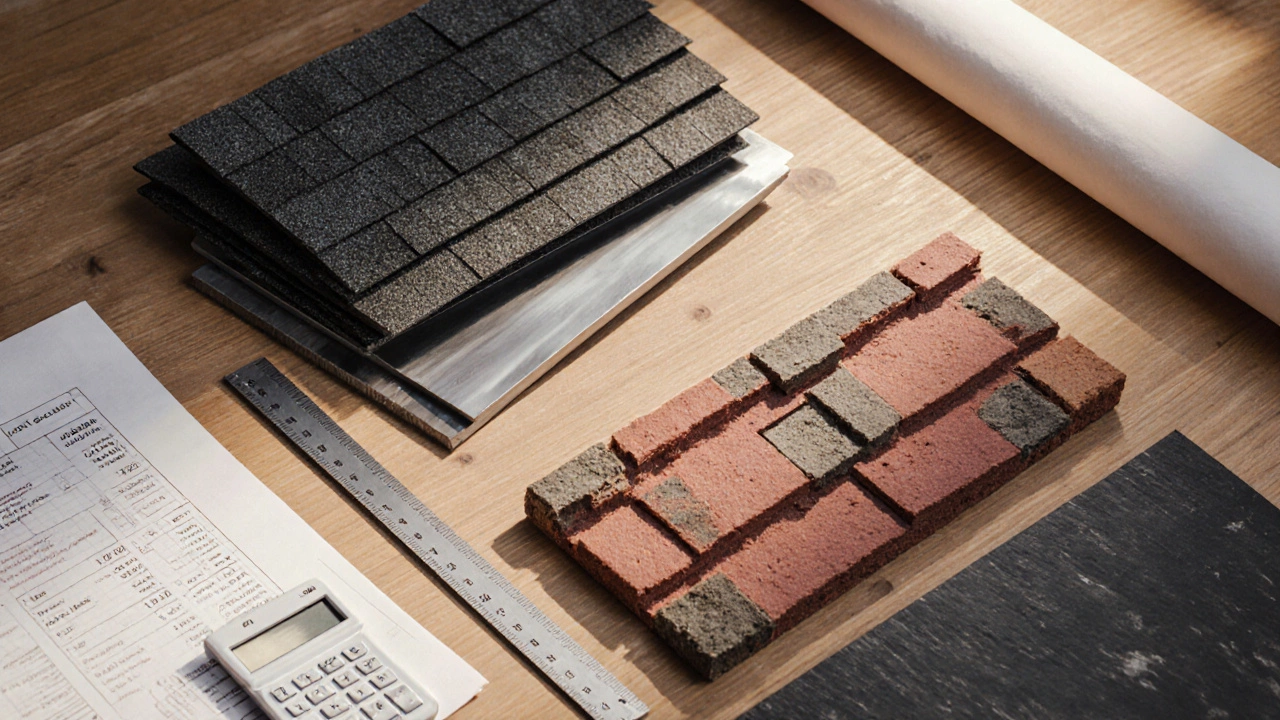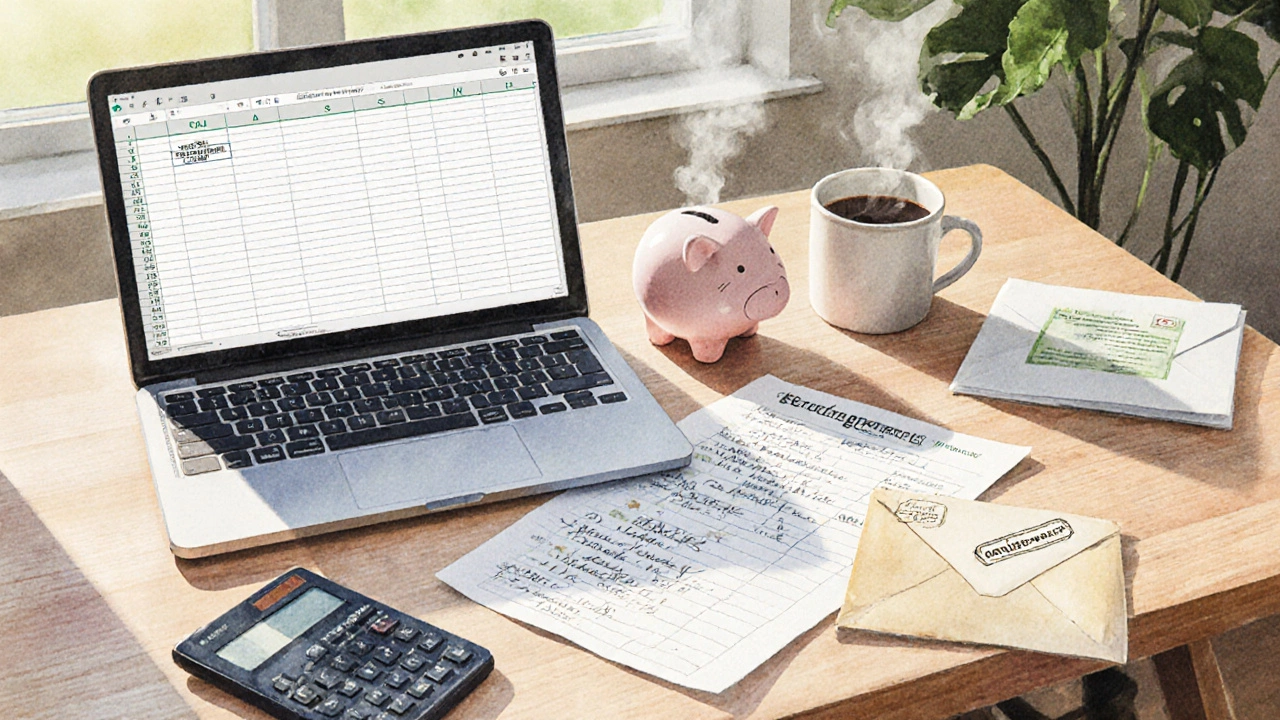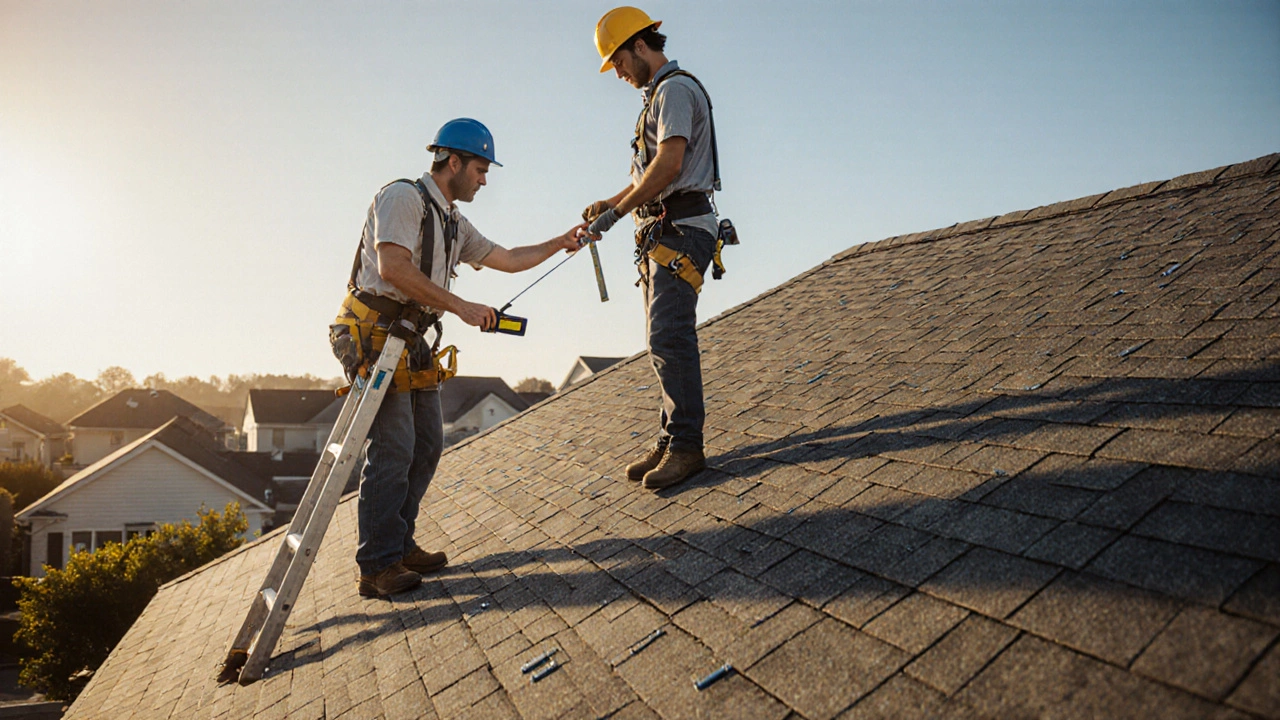Roof Budget Calculator
Estimate Your Roof Replacement Cost
Estimated Budget Breakdown
When a roof starts leaking or shows signs of wear, the first question most homeowners ask is, "How much will this cost?" Budgeting for a roof isn’t just about the price tag on shingles - it’s a full picture of materials, labor, permits, unexpected surprises, and financing. This guide walks you through every step so you can set a realistic roof budget and avoid nasty surprises down the line.
Key Takeaways
- Measure your roof size and pitch before you ask for quotes.
- Break costs into material, labor, permits, disposal, and warranty.
- Compare roofing materials on price, lifespan, and maintenance.
- Ask at least three contractors for detailed, itemized estimates.
- Set aside a 10‑15% contingency fund for hidden issues.
Understanding Your Roof Project
Before any numbers appear, you need a clear scope. Is the project a full replacement, a patch repair, or a partial re‑shingle? The scope determines the amount of demolition, the need for new decking, and whether you’ll need structural reinforcement.
Roof inspection is the comprehensive assessment of roof condition, including size, pitch, existing material, and hidden damage typically performed by a professional inspector or an experienced roofing contractor. A good inspection reports square footage, slope, and any areas that might need extra work, like rot‑damaged decking.
Break Down the Cost Elements
When you hear a single price, it’s usually a bundle of many smaller pieces. Splitting them out helps you see where you can save or where you need to splurge.
- Materials - shingles, underlayment, flashing, nails, sealant.
- Labor - crew wages, equipment rental, disposal fees.
- Permits - local council approvals; often a few hundred dollars.
- Disposal - hauling away old roofing, recycling fees.
- Warranty - extended coverage can add 5‑10% to material cost.
Each line item should appear on any quote you receive. If a contractor skips a category, ask for clarification before signing.
Choosing the Right Roofing Material
Material choice drives the bulk of your budget. Below is a quick comparison of the most common options. Prices are New Zealand averages for 2025 and reflect mid‑range quality.
| Material | Typical Cost | Average Lifespan | Pros | Cons |
|---|---|---|---|---|
| Asphalt shingles | $45-$60 | 15-25 years | Easy to install, widely available | Shorter lifespan, less fire‑resistant |
| Metal panels | $80-$120 | 30-50 years | Durable, energy‑efficient, lightweight | Higher upfront cost, louder during rain |
| Concrete tile | $90-$130 | 30-40 years | Fire‑resistant, classic look | Heavy, may need reinforced decking |
| Slate | $150-$200 | 50-100 years | Longevity, natural beauty | Very expensive, specialist installers required |
When you plug these numbers into your spreadsheet, you’ll see how a material switch can swing the total by tens of thousands.

Getting Accurate Quotes from Contractors
Roofing contractor is a licensed professional who installs, repairs, or replaces roofing systems selection matters just as much as material choice. Follow these steps:
- Gather at least three written estimates.
- Ensure each estimate includes a detailed line‑item breakdown.
- Check the contractor’s licence, insurance, and references.
- Ask about warranty coverage and who handles warranty claims.
- Beware of prices that seem unusually low - they often hide cost‑cutting on materials or labor.
Use a simple table to compare the offers side‑by‑side. The contractor with the best value isn’t always the cheapest; factor in reputation and warranty length.
Financing Your Roof Project
Roof financing includes options such as personal loans, home equity lines of credit, credit cards, or insurer‑provided roof repair programs. Here’s a quick look at the pros and cons of each:
- Personal loan - Fixed interest, predictable payments, but may have higher rates than secured options.
- Home equity line of credit (HELOC) - Low interest, draws as needed, but uses your home as collateral.
- Credit card - Fast approval, but high interest if not paid off quickly.
- Insurance claim - Can cover storm damage; requires proof of loss and may involve a deductible.
Run the numbers: if you can secure a 4% HELOC versus a 7% personal loan, the interest savings over a 5‑year term could be several hundred dollars.
Building a Contingency Fund
Even with a thorough inspection, hidden problems surface once the old roof comes off. Rotting decking, faulty flashing, or unexpected structural issues can add cost quickly.
Allocate 10‑15% of your total estimated budget to a contingency fund. For a $20,000 roof, set aside $2,000-$3,000. Keep the money in a separate account so you’re not tempted to dip into your emergency fund for other expenses.
Creating a Simple Budget Spreadsheet
Spreadsheets are the easiest way to visualize every line item and track spending. Follow these steps:
- Open a new sheet and label columns: "Item," "Estimated Cost," "Actual Cost," "Notes."
- Enter each cost element from the breakdown (materials, labor, permits, disposal, warranty, contingency).
- Insert a formula to sum the "Estimated Cost" column - this shows your projected total.
- As invoices arrive, fill in the "Actual Cost" column and watch the variance.
- Use conditional formatting to highlight any item where actual exceeds estimate by more than 10%.
Seeing the numbers in real‑time helps you make decisions, like whether to upgrade to a higher‑quality underlayment or stay with the original plan.

Timing Payments and Cash Flow
Most roofing contracts split payment into three milestones:
- Deposit - 10‑20% before work begins (covers mobilization and ordering materials).
- Mid‑project - 40‑50% after old roofing is removed and decking inspected.
- Final payment - remaining balance once the roof is installed, cleaned, and inspected.
Plan your cash flow accordingly. If you’re using a loan, schedule the draw dates to match these milestones to avoid paying interest on unused funds.
Common Pitfalls and How to Avoid Them
- Skipping the inspection - Leads to surprise repairs and higher labor costs.
- Under‑estimating roof size - A 5% miscalculation can add a thousand dollars or more.
- Choosing the cheapest material - May save upfront cash but increase long‑term maintenance.
- Not getting a written warranty - Leaves you uncovered if a leak appears later.
- Ignoring permits - Can result in fines or the need to redo work.
Quick Checklist Before You Sign
- Full roof inspection report with measurements.
- Itemized quote from at least three licensed contractors.
- Comparison of roofing material costs and lifespans.
- Chosen financing method with interest calculations.
- Contingency fund ready (10‑15% of total).
- Written warranty and permit requirements documented.
- Payment schedule aligned with cash flow plan.
Frequently Asked Questions
How do I calculate the square footage of my roof?
Measure the length and width of each plane, then multiply and add them together. For pitched roofs, multiply the total by the pitch factor (1.0 for flat, 1.2‑1.5 for typical residential slopes). Most contractors will do this for you during the inspection.
What permits are needed for a roof replacement in Auckland?
A building consent is usually required if you’re changing the roof structure, material, or adding insulation. Minor repairs may only need a code compliance certificate. Check the Auckland Council website or ask your contractor to handle the paperwork.
Is it worth paying extra for a longer‑lasting roof material?
Yes, if you plan to stay in the home for 15 years or more. A material like metal or slate has a higher upfront cost but can save you from a full replacement for decades, often paying off the price difference through avoided labor and disposal fees.
Can I finance a roof repair with a HELOC?
Absolutely. A HELOC lets you draw only the amount you need, and the interest is usually lower than unsecured loans. Just remember the line of credit is secured against your home, so missed payments could affect your mortgage.
How much should I set aside for a contingency fund?
Aim for 10‑15% of your total estimated budget. For a $25,000 project, that means $2,500‑$3,750. This cushion covers hidden damage, price swings in material costs, or unexpected labor extensions.
Next Steps
Now that you have the full picture, start with a professional roof inspection. Use the measurement data to fill in the budget spreadsheet, compare at least three contractor quotes, and decide on a material that matches both your budget and longevity goals. Finally, line up your financing and set aside that contingency fund. With a clear plan, you’ll move from “I don’t know how much this will cost” to “I’ve got this under control.”

Written by Fletcher Abernathy
View all posts by: Fletcher Abernathy